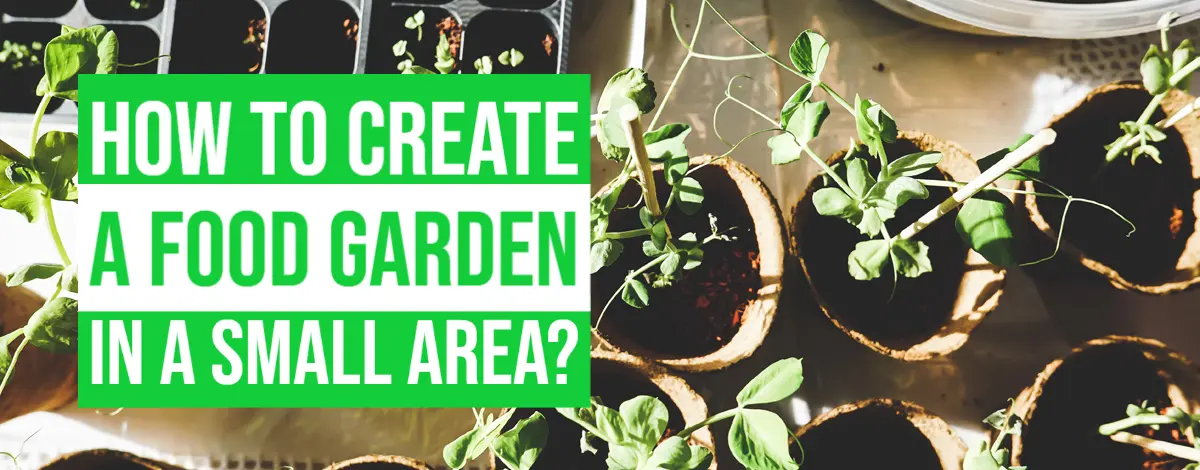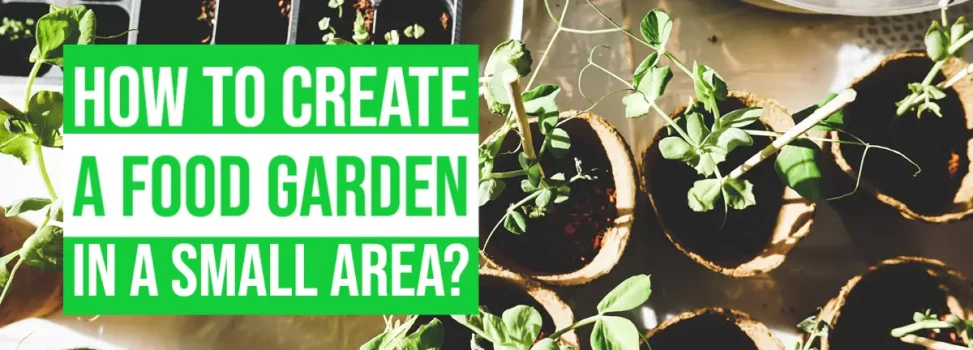Small gardens are personal areas, therefore selecting plants and structural elements must be done with care because onlookers may only catch a glimpse of the complete garden at one time.
As more individuals learn about the benefits of raising their food, home gardening is still on the rise. These small-space growing strategies will help you make the most of your lawn this season if you’ve always wanted to have a backyard vegetable garden to produce your fresh food but feel limited by space.
Locate New Garden Areas:
Give your yard a fresh makeover. You could probably put edibles in places you weren’t aware of before. Do you possess a vacant area of grass? Consider turning it into meals to save yourself some mowing. Not always a vegetable patch (though it can be). If you may, you may replace that area with a cherry tree, grapes, or herbal spiral.
By using a technique called “sheet mulching,” you may transform a portion of your yard into a garden without digging or tilling. Simply place cardboard sheets on the ground, cover them with mulch, dirt, compost, and other natural materials, and allow nature to take care of the rest. After some heavy machinery, unfortunately, compacted our soil, we covered the area with cardboard and mulch to give the worms and soil microbes time to do their magic. After a season or two, the once-dry, lifeless soil was rich and filled with life once more.
Do your flower beds have any vacant space where you could put some herbs or a lovely eggplant? Or areas where you may place containers or jars for smaller plants like chilies, aromatic plants, or spinach? Window boxes may grow a variety of herbs or chili peppers that will provide flavor and nutrition to your next meal while also growing more than just flowers and looking lovely.
Visualize Vertically:
Spacious plants like melons, cucumbers, and squash can be encouraged to climb a framework or barrier, sparing you valuable garden space that could be used for other plants. To make room for additional plants, you can create bean and cucumber “teepees” out of poles and tree branches.
Other vining plants, such as lovely crimson runner beans on your arbor or fence or grape vines that can provide shade and fruit for your yard, can be added as landscaping. Long before we taste their delicious berries, we enjoy the cool, shade, and solitude that our Bluebell grape vines provide for us as they climb up our screened-in porch. Additionally, grapes can be trained to climb stronger fruit trees.
Additionally, you can add growing areas to walls by using creative wall planters, disused gutters, or shoe organizers. Another method for reducing space is to use planters that maximize garden space.
Garden Diligently:
By forgoing conventional row techniques and planting far closer together than rows allow, space is first conserved. Mel even suggests interplanting some crops with slower-growing plants like peppers, such as fast-growing radishes. Furthermore, rather than releasing the soil bare after one crop is finished, you add a healthy amount of compost before planting your subsequent crop. This ensures that as much of your available space is utilized as possible all through the planting period.
For example, you might dig up your early-season greens when they’re past their best and plant tomato transplants or carrot seeds in their place. You’re ready to plant your cool-season crops, like kale and spinach, after the summer bounty of carrots. Even novice gardeners may successfully plan their season with Mel’s books, albeit it does need some forward preparation (and a decent composter). What a small garden box can produce when you employ these techniques is amazing!
Raised beds have benefits for growing on small lots as well. There is less weed invasion that may otherwise rob the bed of nutrients because your valuable fertilized soil is kept contained. Raised garden beds also help with drainage, weed and pest control, erosion reduction, and gardening-related back pain.
A raised bed also offers a solid framework to which you may fasten a trellis, thus doubling the bed’s capacity for growth. The focal point of a tiny yard might be a beautiful raised bed.
Another option for small-space gardening is elevated planters, which are perfect for balconies, patios, and decks. Many of the benefits of a raised bed can also be found in a planter. However, planters have bottoms. Additionally, “elevated” planters contain legs, which is highly practical for gardeners with sore backs.
These planters are smaller than most raised beds; a typical dimension is 3′ by 3′ because of the weight of the soil. Larger variants, such as the natural cedar elevated planters, are robustly built to sustain the additional weight and offer significant growing room for confined space.
Intensive “greens” gardens are best suited for planters with soil depths of 8″ or more. You will be able to cultivate more crop varieties and have larger yields with variants with soil layer depths. Moisture management is a challenge when planting in planters. On hot days, the soil can dry out and cause a crop to wilt within hours. Moisturization depletes through the bottom of the planter. Maintain the plants well-mulched, and pay attention to the soil moisture level to avoid this.
The greatest method to squeeze the maximum output out of your limited space is to optimize your soil. To ensure that your plants thrive, you should treat your soil with nutrients and compost.
Efficiency is a goal of permaculture, another developing technique that achieves it by imitating natural patterns. For example, underplanting trees with fruit-bearing shrubs and edible groundcovers increases the amount of food your space can grow while also utilizing the available water.
By combining mutually beneficial species (such as nitrogen fixers or pest-repelling plants), this technique also aims to reduce other inputs. Your fruit tree’s flowers may draw pollinators or other beneficial insects, increasing your output.
Make Your Growth Season Longer:
You may grow more tasty food from your garden by using cold frames, hoops, or cloches to assist you to get your plants in sooner and maintain them longer. With the help of these tiny, lightweight constructions, you can increase the success of seed germination, shelter young sprouts and seedlings from spring hailstorms, late frosts, and cold rain, and shift them from bed to bed as your gardening plan progresses. New seedlings are also shielded by a cloche or cold frame from birds, mice, and other tiny animals that might roam over your garden beds.
The only issue with these compact enclosures is that constant temperature control necessitates close monitoring. When the sun comes out, you’ll need to open the flap or vent because they heat up rapidly. To keep out the chilly night air, you must go outside in the evening and close the vents. A greenhouse, if you have the room, is more merciful in this regard and provides you with an early start on the season while shielding your plants from unpredictably bad weather.
When Picking What To Plant, Keep It Simple:
If you don’t have a lot of room, you need to be careful about the way the plants you choose and develop. Plants that don’t spread out excessively should be chosen, such as dwarf trees and compact, bush, and patio varieties of vegetables like tomatoes and zucchini.
But don’t assume that tiny plants will provide paltry yields. Sure, a dwarf tree will probably produce less fruit than a conventional tree, but over the years that you have the tree, your family will still get to enjoy dozens of kilograms of tasty home-grown apples or peaches. A well-kept bush zucchini or a patio tomato will yield an abundance of delicious meals.
While most of us wish, we had large, sprawling gardens, the truth is that most of us simply don’t. There’s nothing wrong with that; with a little imagination, even the smallest places may provide you with an abundance of vegetables, flowers, or even your very own little outside green space. To find out more about plants for tiny spaces and how to create a garden in a small area, follow the above-mentioned tips.
A garden is a terrific method to grow nutritious fruits, veggies, and herbs, so you can prepare your favorite fresh food at home. Although huge outdoor gardens yield larger crops, you may cultivate wholesome veggies in a small area without a vast garden bed.
A small space is sufficient for a food garden. Your yard, patio, or balcony may all have a few small sunny patches that work well. Aside from colorful novelty veggies, global variations, and compact plants, heirloom seeds and the creation of new hybrid kinds both provide excellent choices. You can increase your yield by picking the best location and a variety of your favorite plants. Even though you have a small space, you can grow a beautiful garden in that place with the help of the above-mentioned steps.


